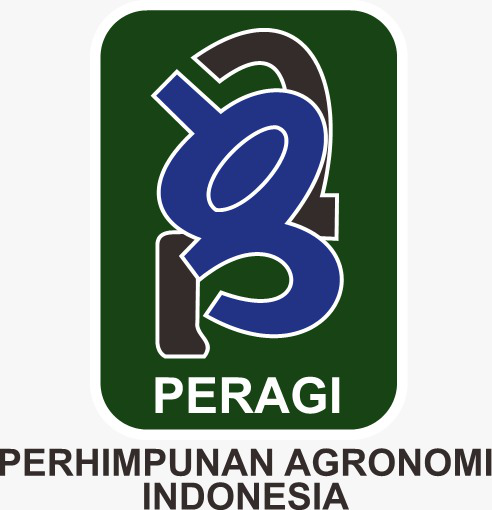Adaptation and Production of Heterotrigona itama from Natural Colonies in Kuantan Singingi
Abstract
Stingless bees also referred to as kelulut, are a species of honey-producing bees that do not possess a sting. Currently, beekeeping is being developed in Kuantan Singingi. However, there is a lack of research on the adaptability and honey production of Heterotrigona itama from natural colonies. In order to enhance understanding and provide valuable insights to the community, conducting a preliminary study on the adaptability and honey production of Heterotrigona itama from natural colonies in the Kuantan Singingi district is essential. This study was carried out in Central Kuantan, utilizing 10 natural colonies, through surveys and field trials to collect data directly from the field. This research aimed to assess the acceptance rate of box topping by the Heterotrigona itama colonies, which was found to be an average of 82.3 days. Additionally, the average amount of honey per pot was 4.1 ml, with a total volume of honey per colony measuring 93.7 ml. The duration of honey pot production was recorded as 93.6 days, and the number of honey pots obtained over a span of 6 months was 22.8 pieces.
Downloads
References
Achmaliadi, R., Adi, I. G. M., Hardiono, Y. M., Kartodihardjo, H., Malley, F. C. H., Mampioper, D. A., Manurung, E. G. T., Nababan, A., Pangkali, L. B., Ruwindrijarto, A., Situmorang, L. L. M., Wardiyono., Victor, B. H., & Matthews, E. (2001). Keadaan Hutan Indonesia (E. Matthews (ed.)). Forest Watch Indonesia. https://wri-indonesia.org/sites/default/files/keadaan_hutan.pdf
Arung, E. T., Ramadhan, R., Khairunnisa, B., Amen, Y., Matsumoto, M., Nagata, M., Kusuma, I. W., Paramita, S., Sukemi, Yadi, Tandirogang, N., Takemoto, N., Syafrizal, Kim, Y. ung, & Shimizu, K. (2021). Cytotoxicity effect of honey, bee pollen, and propolis from seven stingless bees in some cancer cell lines. Saudi Journal of Biological Sciences, 28(12), 7182–7189. https://doi.org/10.1016/j.sjbs.2021.08.017
Dikarulin, S. A., Istyaningrum, D. A. D., Ananda, B. S., Putri, T. A., Amirta, R., Yuliansyah, Kusuma, I. W., & Arung, E. T. (2022). Uji Aktivitas Antibakteri Ekstrak Propolis Lebah Heterotrigona itama Dari Beberapa Lokasi Budidaya di Kalimantan Timur Terhadap Bakteri Propionibacterium acnes. Ulin. JHut Trop, 6(September), 124–128.
Febrianti, AM, I., & Muflihati. (2020). Bentuk Pintu Masuk Sarang Trigona Spp Di Kawasan Hutan Mangrove Surya Perdana Mandiri Kelurahan Setapuk Besar Singkawang Utara. Jurnal Hutan Lestari, 8(3), 620–627. https://doi.org/10.26418/jhl.v8i3.42349
Hrncir, M., Jarau, S., & Barth, F. G. (2016). Stingless bees (Meliponini): senses and behavior. Journal of Comparative Physiology A: Neuroethology, Sensory, Neural, and Behavioral Physiology, 202(9–10), 597–601. https://doi.org/10.1007/s00359-016-1117-9
Lim, J. R., Chua, L. S., & Soo, J. (2023). Study of stingless bee (Heterotrigona itama) propolis using LC-MS/MS and TGA-FTIR. Applied Food Research, 3(1). https://doi.org/10.1016/j.afres.2022.100252
Priambudi, A. S., Raffiudin, R., & Djuita, N. R. (2021). Identifikasi Tumbuhan Sumber Polen pada Madu Lebah Heterotrigona itama dan Tetragonula laeviceps di Belitung Identification of Plants as Pollen Source in Honey of Stingless Bee Heterotrigona itama and Tetragonula laeviceps from Belitung. Jurnal Sumberdaya HAYATI, 7(1), 25–35. https://journal.ipb.ac.id/index.php/sumberdayahayati
Priawandiputra, W., Muhammad Giffary Azizi, Rismayanti, Kartika Martha Djakaria, Anggun Wicaksono, Rika Raffiudin, Tri Atmowidi, & Damayanti Buchori. (2020). Lebah Tanpa Sengat ( Stingless Bees ) Panduan Budidaya Lebah Tanpa Sengat ( Stingless Bees ) di Desa Perbatasan Hutan. In ZSL Indonesia (Cetakan 1). ZSL Indonesia.
Pribadi, A. (2020). Produktivitas Panen Propolis Mentah Lebah Trigona itama Cockerell ( Hymenoptera : Apidae ) Menggunakan Propolis Trap dan Manipulasi Lingkungan di Riau. Majalah Ilmiah Biologi Biosfera : A Scientific Journal, 37(2), 60–68. https://doi.org/10.20884/1.mib.2020.37.2.1045
Pribadi, A. (2021). Perbandingan Uji Budi Daya Lebah Jenis Heterotrigona itama pada Empat Tipe Vegetasi (Comparision of Meliponiculture using Heterotrigona itama Placed at Four Different Vegetations). Jurnal Penelitian Hutan Tanaman, 18(2), 93–108. https://doi.org/10.20886/jpht.2021.18.2.93-108
Rahayu, N. S., Indriyanto, & Asmarahman, C. (2022). Jurnal Kehutanan Indonesia PRODUKSI MADU LEBAH Heterotrigona Itama DI KEBUN. 3.
Rahmad, B., Damiri, N., & Mulawarman, M. (2021). Jenis Lebah Madu Dan Tanaman Sumber Pakan Pada Budi Daya Lebah Madu Di Hutan Produksi Subanjeriji, Kabupaten Muara Enim, Sumatera Selatan (Honeybee diversity and woof source of beekeeping in Subanjeriji production forest, Muara Enim District, South Sumate. Jurnal Penelitian Kehutanan Faloak, 5(1), 47–61. https://doi.org/10.20886/jpkf.2021.5.1.47-61
Seprido, & Andriani, D. (2022). Jenis-Jenis Kelulut Dan Tumbuhan Pakannya Pada Peternakan Kelulut di Desa Koto Baru Kabupaten Kuantan Singingi. 9(2), 265–270.
Syaifuddin, S., Fauzi, H., & Satriadi, T. (2021). Produksi Madu Kelulut (Trigona Iitama) Pada Dua Tipe Pola Agroforestri Pakan Lebah Yang Berbeda (Studi Di Desa Mangkauk Dan Kelurahan Landasan Ulin Utara. Jurnal Sylva Scienteae, 4(5), 767. https://doi.org/10.20527/jss.v4i5.4198
Copyright (c) 2024 Seprido Seprido, Nariman Hadi

This work is licensed under a Creative Commons Attribution 4.0 International License.
Authors who publish with Jurnal Agronomi Tanaman Tropika (JUATIKA) agree to the following terms:
Authors retain copyright and grant the Jurnal Agronomi Tanaman Tropika (JUATIKA) right of first publication with the work simultaneously licensed under a Creative Commons Attribution License (CC BY 4.0) that allows others to share (copy and redistribute the material in any medium or format) and adapt (remix, transform, and build upon the material for any purpose, even commercially) with an acknowledgment of the work's authorship and initial publication in Jurnal Agronomi Tanaman Tropika (JUATIKA).
Authors are able to enter into separate, additional contractual arrangements for the non-exclusive distribution of the journal's published version of the work (e.g., post it to an institutional repository or publish it in a book), with an acknowledgment of its initial publication in Jurnal Agronomi Tanaman Tropika (JUATIKA). Authors are permitted and encouraged to post their work online (e.g., in institutional repositories or on their website) prior to and during the submission process, as it can lead to productive exchanges, as well as earlier and greater citation of published work.







 More Information
More Information



